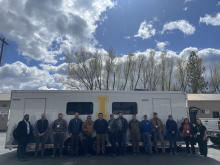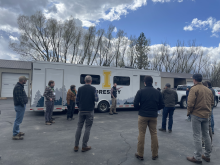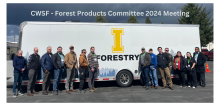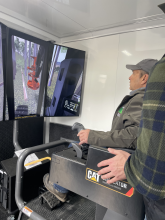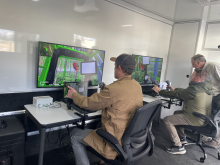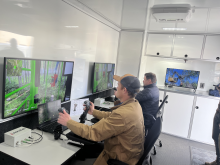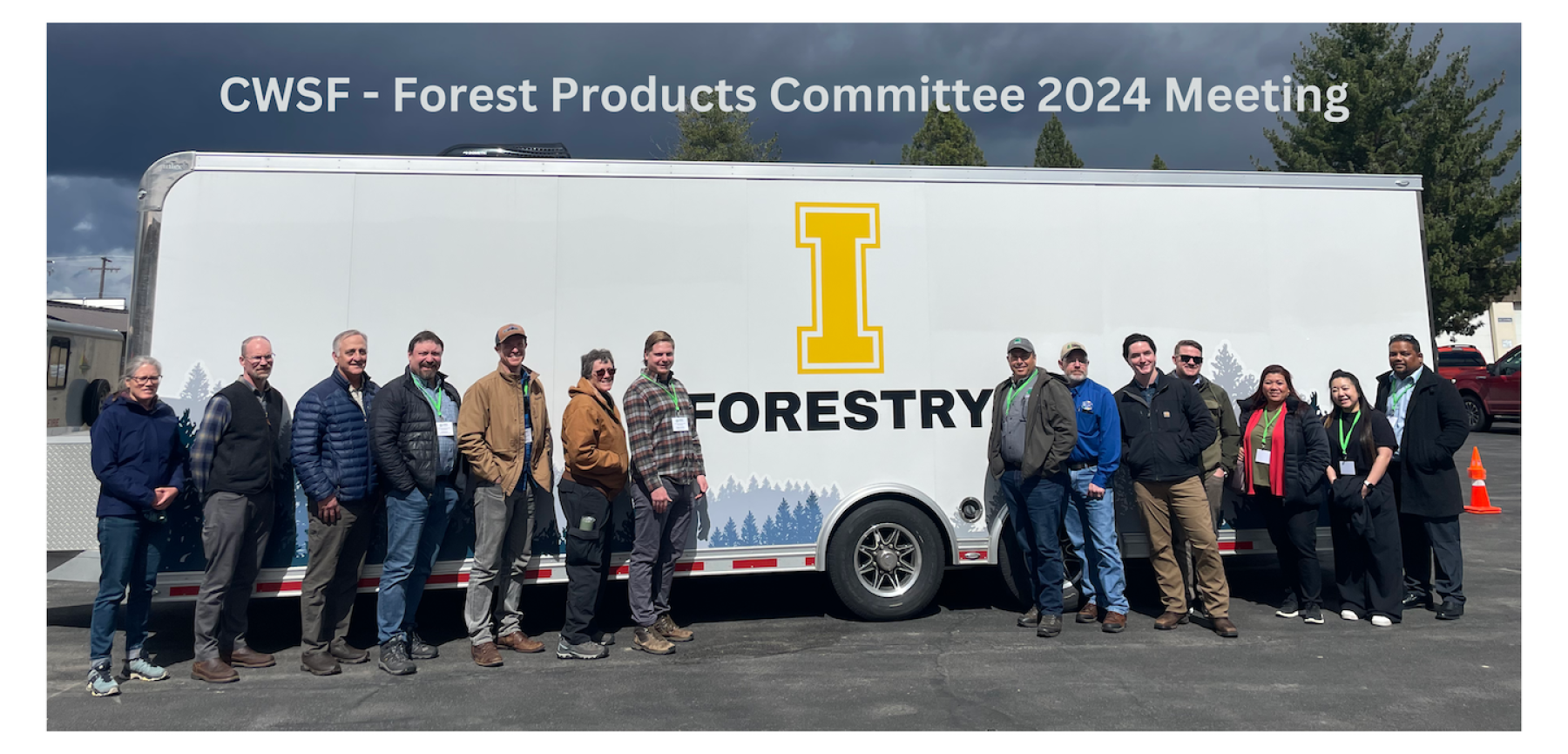
Authored by Kim Slezak, Nebraska Forest Service
The Council of Western State Foresters (CWSF) Forest Products Committee (FPC) gathered for its 2024 Annual Meeting at the Idaho Department of Lands (IDL) office in Coeur d’Alene, Idaho, April 9-12.
The FPC was established in 2017 via a charter from CWSF to address a range of regional forest utilization issues. In cooperation with CWSF leadership, the FPC works to support sustainable forest management, the forest industry, and communities. Committee members help to inform the CWSF membership about issues and opportunities for leadership action. Membership of the FPC includes foresters, forest product, utilization, and marketing specialists from 17 western states and six U.S.-Affiliated Pacific Islands, as well as a State Forester advisor, and a staff liaison from CWSF. The USDA Forest Service is a critical partner and integral participant in committee events.
The annual FPC meeting provides an opportunity for committee members and partners to meet in-person to network and address utilization issues and opportunities, at both the state and national level.
The 2024 meeting focused on the following key outcomes:
- refine and act on strategies for achieving priority items for UCF program implementation in the West;
- share and discuss a range of core issues, projects, and products to cost-effectively deliver and support state and federal programs and initiatives; and
- strengthen the regional network and voice of UCF leaders in the West.
This year’s meeting was hosted by Archie Gray, FPC Chair, with support from IDL staff, FPC leadership team, and CWSF staff.
Attendees included representatives from Idaho, Kansas, Montana, Nebraska, New Mexico, Utah, the Marshall Islands, and three USFS Regions. Also in attendance were the IDL Urban and Community Forestry Program Manager and Wildfire Risk Mitigation Program Manager, the Coeur d’Alene Urban Forester, the University of Idaho College of Natural Resources, the Idaho Forest Products Commission, and CWSF staff.
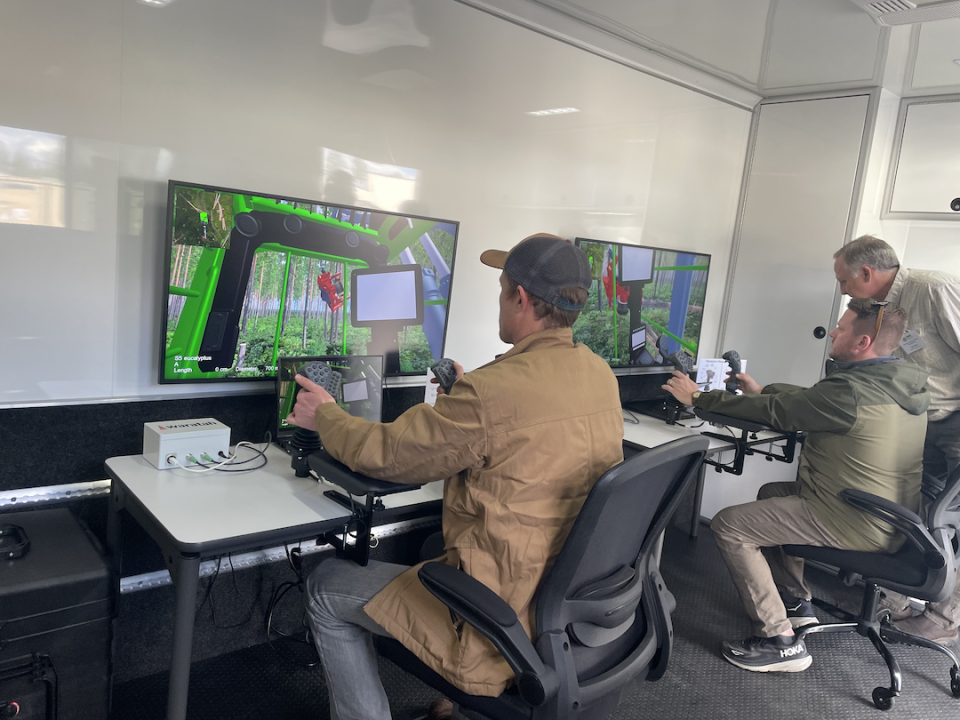
Presentations and discussions focused not only on utilization but also on workforce development, for without loggers and sawmills, there is little, if any, utilization. Archie Gray noted that the average age of a logger in Idaho is 55, and few young people enter the field.
Presentations included Coeur d’Alene Tribal Forestry utilization, Wildfire Risk Mitigation utilization, urban tree utilization in Boise and Coeur d’Alene, Idaho Forest Products Commission, and new University of Idaho 2-year Associate degrees including the A.S. in Forest Operations and Technology degree.
A new U of I state-of-the-art training trailer was on display and provided an opportunity for attendees to ‘drive’ a feller-buncher training simulator. High school students and adults around the state are being introduced to this profession with the trailer. Once in the U of I program, they get to learn on the real thing, “using commercial harvesting equipment and technology to help manage U of I’s more than 10,000-acre Experimental Forest near Moscow.”
One of the biggest takeaways during the workforce development discussion was the U of I speakers Blake Manley and Ryer Becker mentioning a national working group for curriculum and classes. A meeting was happening soon with many partners so that not every interested secondary and post-secondary institution has to start from scratch. New Mexico has a community college interested in starting a training program.
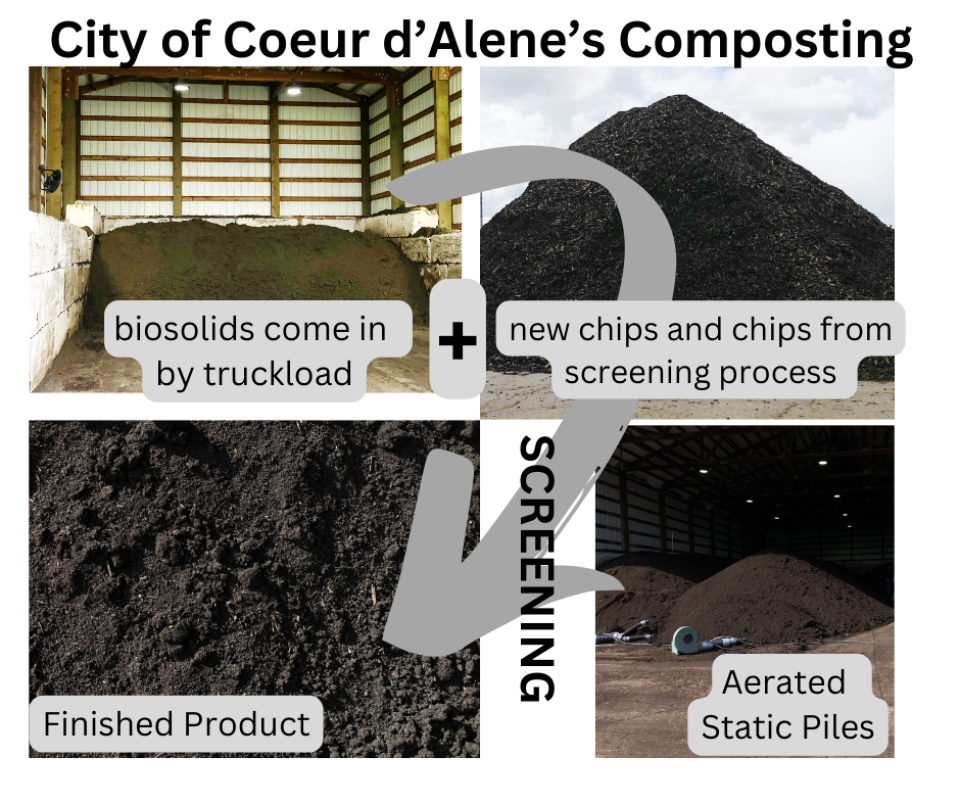
On the afternoon of day one, attendees headed out for a field trip to the City of Coeur d’Alene’s composting program site where municipal biosolids are mixed with wood chips from an Idaho Forest Group Mill and then undergo Aerated Static Pile Composting. An average annual 18,000 wet-pound per day of biosolids are mixed with the chips and sit in aerated piles with a turnaround of 51 days from odoriferous sludge to Class A compost that is unrestricted in its horticultural use. An average of 4800 cubic yards of compost is processed annually and sold to area landscapers, some of which resell to the public.
After the site visit, Urban Forester Nick Goodwin gave a presentation on their other urban wood utilization. He commented that they are “striving to throw as little wood away as they can.” Benches in parks are just a few of the things employees are crafting from the city’s downed urban trees.
For the first time, two attendees joined from the Marshall Islands and it became clear that we could learn from their participation. The Marshall Island participants came to learn more about the FPC and how they could engage with us. For FPC to be of more value to them, and frankly also to states with more non-traditional forest products, more information and learning opportunities in marketing is needed. As more mill closures and workforce issues affect harvesting levels in historical timber states, perhaps more marketing knowledge is good for all parts of the supply chain - including loggers, haulers, loggers, haulers, sawmills/processors, makers, and consumers.
After the meeting ended, several attendees hung around for a trip to the Idaho Forest Group Sawmill north of Coeur d’Alene. Despite the de-barker malfunctioning, participants enjoyed watching the prototype robotic wrapping of the finished bundles.
The FPC meets quarterly, once in person in April and virtually the other three times.
To learn more about the FPC visit https://www.westernforesters.org/about/committees/forest-products-committee.
Photos: Halie Miyazawa

